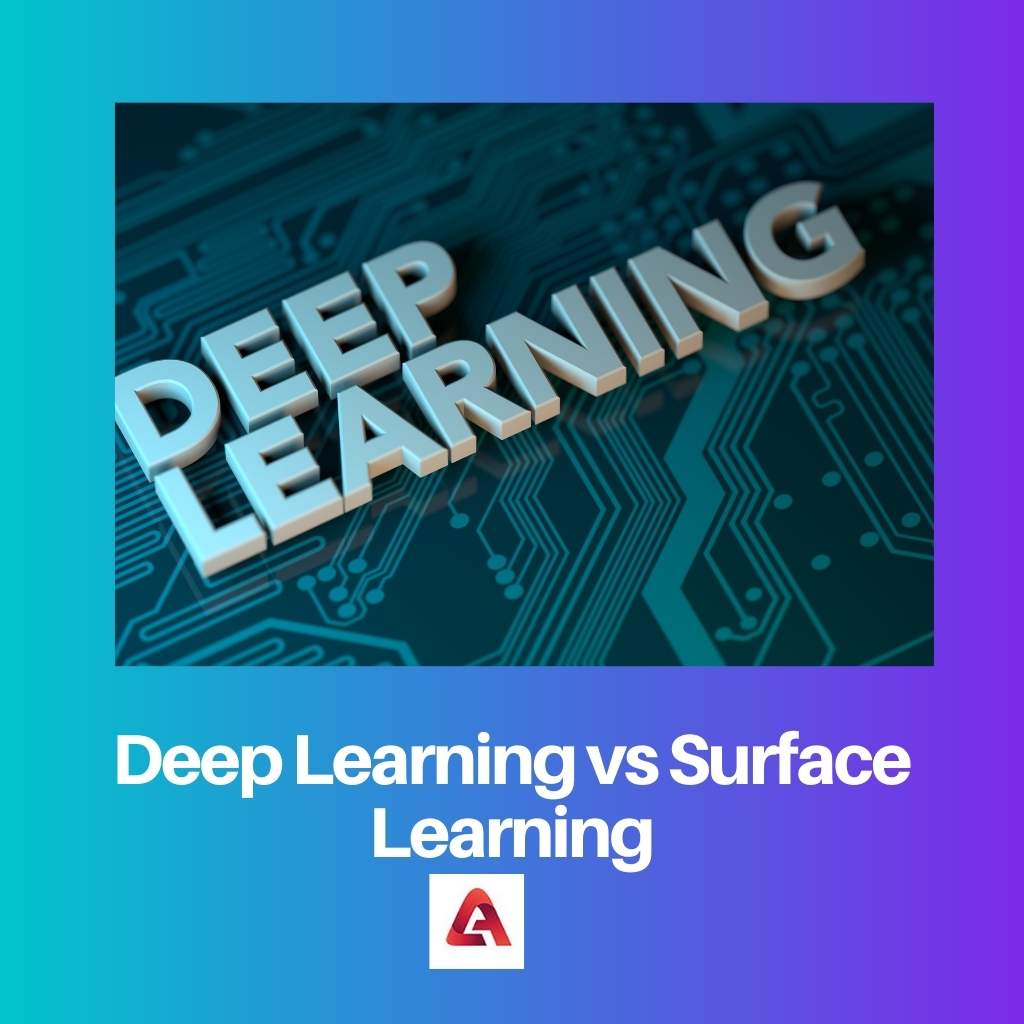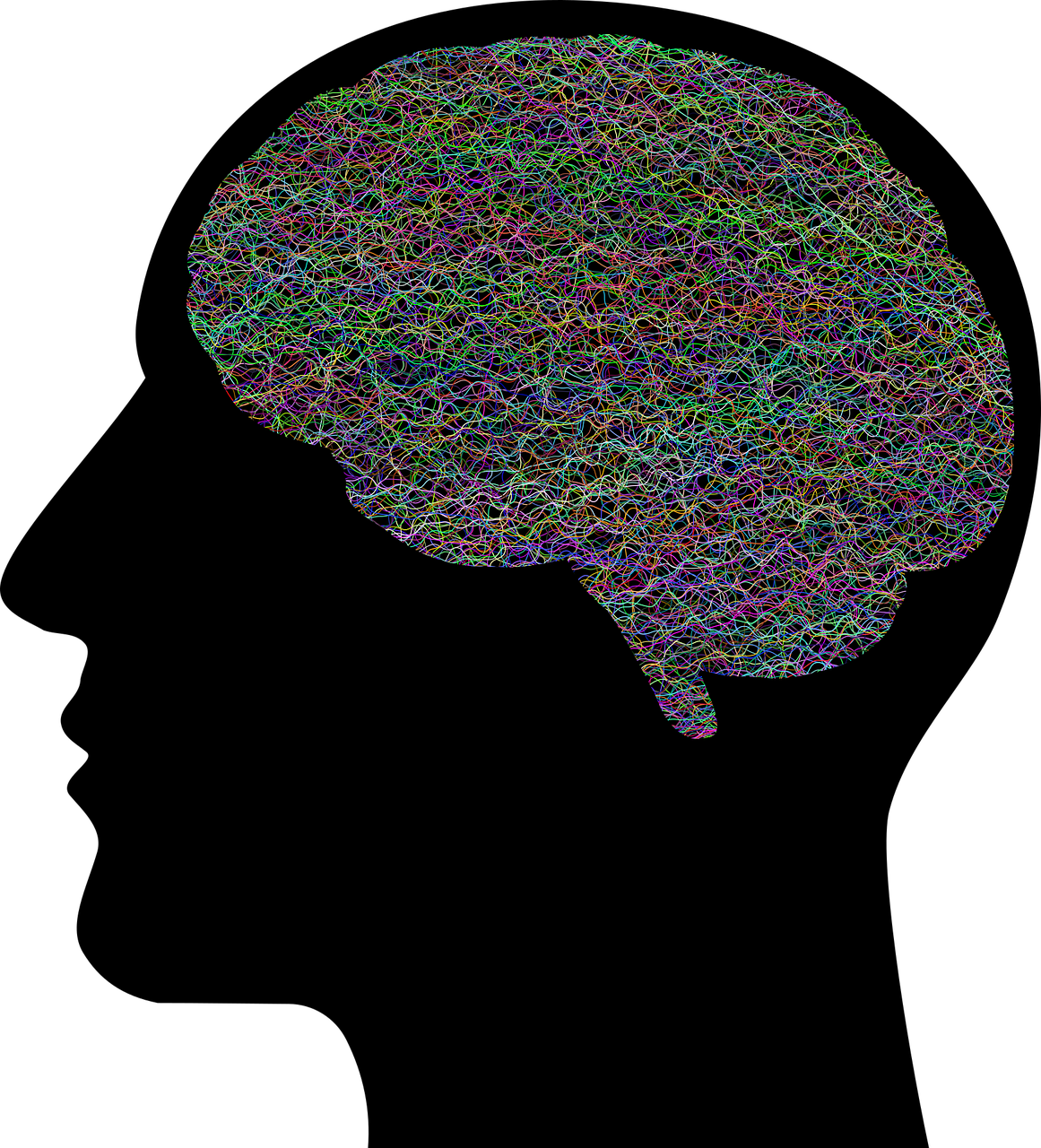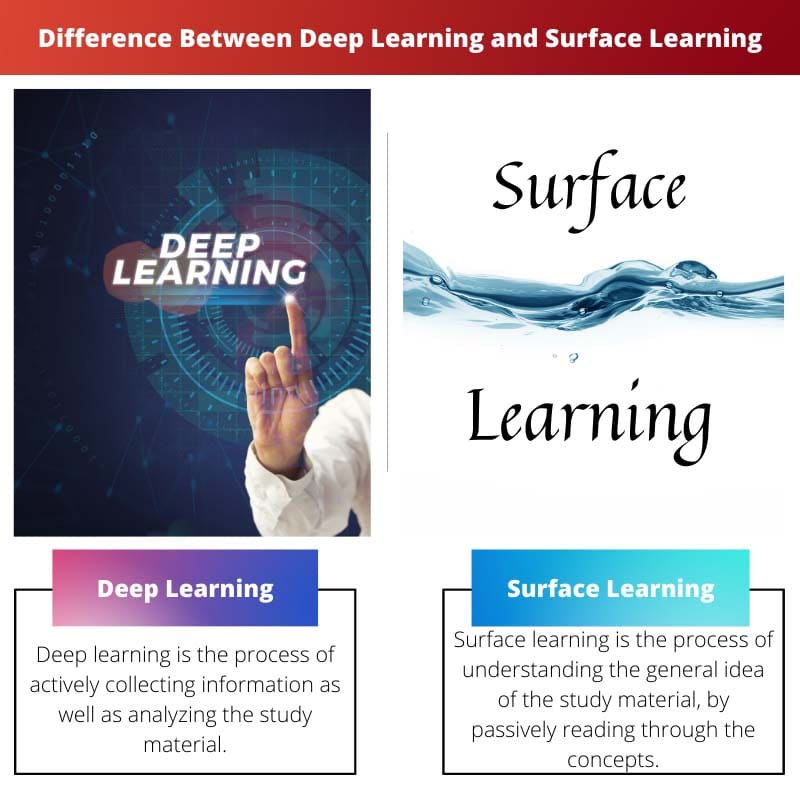The depth is the actual amount of data that a student goes through while learning something.
Key Takeaways
- Deep learning involves understanding and applying concepts at a profound level, while surface learning involves memorizing and reproducing information without full comprehension.
- Deep learners develop critical thinking and problem-solving skills, while surface learners may struggle with complex tasks and independent thinking.
- Deep learning promotes long-term knowledge retention, whereas surface learning may lead to quick forgetting of material.
Deep Learning vs Surface Learning
Deep learning is a process of collecting information actively and analyzing a study material, and it requires deep learning to understand the material. Surface learning is a process of understanding the general idea of a material by passively reading through the concepts, to gain a general idea.

Deep learning is the process of actively collecting as well as analyzing the material being studied.
It is the process of outlining the material being studied without spending much time on the material while trying to cover as much material as possible.
Comparison Table
| Parameters of Comparison | Deep Learning | Surface Learning |
|---|---|---|
| Definition | Deep learning is the process of actively collecting information as well as analyzing the study material | Surface learning is the process of understanding the general idea of the study material, by passively reading through the concepts |
| Thinking process | Critical thinking is required while deep learning | Passive thinking is present while surface learning |
| Target | Performed to completely understand and analyze the study material | Performed to obtain a general idea about the study material |
| Learning process | Constant thinking and rumination of the data being studied | Only reading and getting the general idea of the topic is required |
| Situations | Most observed in case of doctors and scientists, and other critical environments | Observed in everyday situations, where critical thinking is not required |
What is Deep Learning?
Deep learning is a critical learning process where the main objective is to constantly collect, analyze and ruminate the data to completely understand the study material.
It is the process of understanding everything about the subject being learned: the concepts, the examples, case studies, etc.
In the aforementioned environments, constant analysis of data is the key aspect, as well as keeping in touch with all the different changes happening in the field of study.

What is Surface Learning?
Surface learning is the process of understanding the general idea of the study material by passively reading through the concepts.
The learner tries to understand the general concept of the subject before comprehensively studying the subject.
In such situations, a new learner would try to create a general understanding of the subject before deep-diving into the subject.

Main Differences Between Deep Learning and Surface Learning
- Constant thinking and rumination are part of Deep learning. Only reading is performed in Surface learning
- Deep learning is commonly observed among doctors, scientists and people working in such critical environments. Surface learning is observed in everyday situations where critical thinking is not needed.




